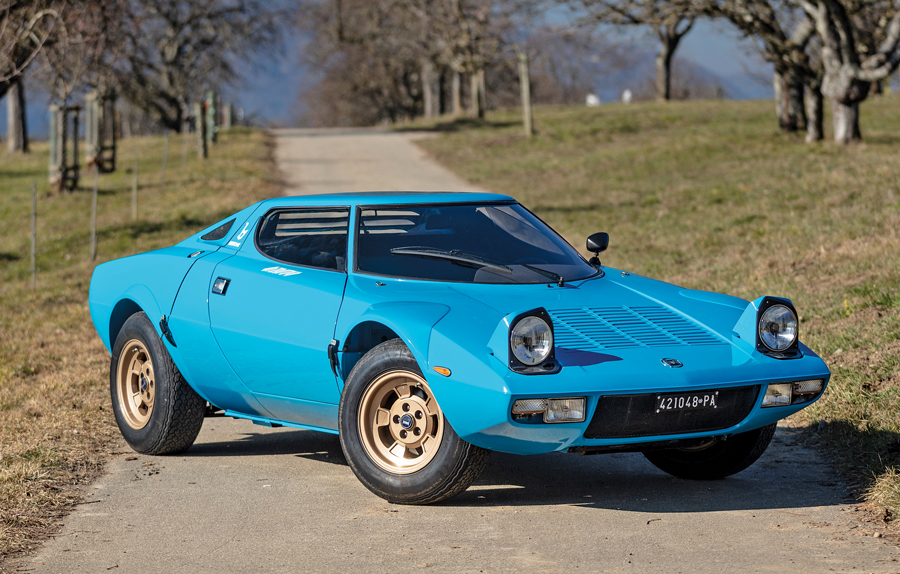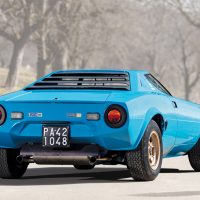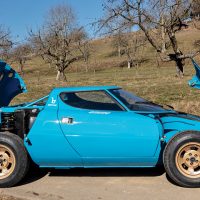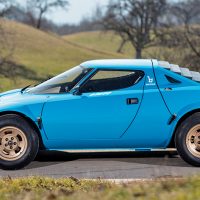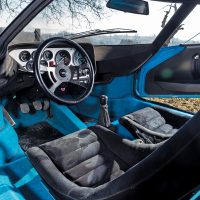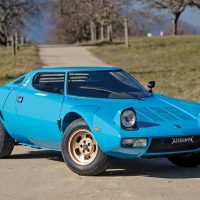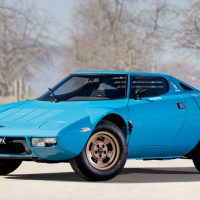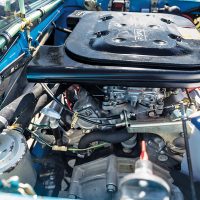SCM Analysis
Detailing
| Vehicle: | 1975 Lancia Stratos HF Stradale |
| Years Produced: | 1973–75 |
| Number Produced: | 495 |
| Original List Price: | $17,000 |
| SCM Valuation: | $399,500 |
| Chassis Number Location: | Stamped into the body in front compartment |
| Engine Number Location: | On block above water pump |
| Club Info: | American Lancia Club |
| Website: | http://www.americanlanciaclub.com |
| Alternatives: | 1984 Ford RS200, 1976 Alpine A310, 1981 Renault 5 Turbo 1 |
| Investment Grade: | B |
This car, Lot 255, sold for $613,888 (€545,000–$1=€0.89), including buyer’s premium, at RM Sotheby’s Essen, Germany, sale on April 12, 2019.
Sometimes, logic is difficult to find in the collector-car world.
Most people recognize that rarity can be an important attribute of value. In the case of homologation specials such as the Lancia Stratos Stradale, that didn’t seem to matter for quite a while. As many, if not indeed most, owners wanted to make an impression in vintage events or in their garages, a great number of Stradale models became clones of or tributes to Group IV specification cars.
Of course, the world of racing in Italy is full of local heroes proving themselves in the heat of battle. Therefore, in period, a number of cars delivered as Stradales were “competition prepared” by private shops for non-factory drivers. After the front-line World Rally Championship Works career of the Stratos ended in 1976, many continued using the cars in other events, large and small.
But it was when the vintage career of the Stratos began that the conversions seemed to pick up pace. The cloning could consist of actual performance enhancements — or simply a paint job and seat upholstery swap.
Nevertheless, as was the case with the even-more-rare Ford GT40 street cars, an interesting piece of history was often lost in the service of vanity. The tide seems to have begun to turn — and in a major way.
Fast car rising
I am often asked, “Which car is currently undervalued and might make a good return as an investment?” My answer has long been, “It depends on how long you plan to hold it, what you’ll do with it while you have it, and how much money you want to spend on it while you have it.”
The reality, of course, is that in any appreciating asset, time is your friend.
While preparing to write this profile, I did what I usually do — I go though the past SCM profiles on the model, often finding my own past observations on the subject in the process.
In this case the oldest I found was one printed in the April 2000 issue, written by my old friend Mike Duffey. It is certainly interesting to read today. The subject was another Stratos Stradale, offered in a Christie’s sale in May 1997 in Geneva, Switzerland. That car was a no-sale in the auction, at a called high bid of $43,000.
I first wrote about the Stratos in SCM for the May 2007 issue (p. 52). The subject was a Stradale that had been turned into a rally clone, complete with Group IV competition gearbox. The seller, a person I know, had installed modern, “more comfortable” seats in the car for use on non-competitive vintage road tours. It was largely because he also barely fit in the car otherwise.
Nevertheless, on its last rally outing it ended up clouting a corner on a rock face, causing minor damage to the car and slightly greater damage to the owner’s feelings.
Perfectly and correctly repaired, it went on to sell at RM Auctions’ Phoenix, AZ, sale in January 2007 for $137,500 — well above the $70k–$90k estimate. It was, at the time, a rare example of a Stradale, even one made into a semi-competition car, making such money. That should be compared with the $281,000 a genuine Group IV Stratos brought at Artcurial in Paris a month later.
In one of the highest sales recorded on the website Bring a Trailer, a 1974 Stradale sold for $475,000 in December 2017. It was stated to be a two-Italian-owner car from new — and told a story quite illustrative of a car far more desirable as a collectible object than when new.
It had been completed in July 1974, yet it was first registered in July 1977. It’s well known that the Stradale models were notoriously difficult to sell when they were built. They are now greatly appreciated for many of the qualities that held them back when fresh to the market.
They are not truly scary to drive — I’ve spent some time behind the wheel and thoroughly enjoyed myself. Of course, I was also not trying to explore the limits of performance. There’s a lot to savor well before you get there.
This sale was not the highest recorded at auction for a Stratos Stradale. That mark was set in 2014 at RM Auctions’ Monterey sale, when an incredibly original car with under 4,500 km (2,796 miles) was sold for $660,000.
Buy unloved, sell when desired
Even with the long storage our subject car has endured, I would rate this one a better bet, as it has been used, and with proper servicing and sorting, can be used enthusiastically without fear of harming a key attribute of its value for a certain market segment.
The real winner from an investment point here is any fortunate owner who bought one when no one cared and has loved and enjoyed his car for a few decades as the world caught up. ♦
(Introductory description courtesy of RM Sotheby’s.)
